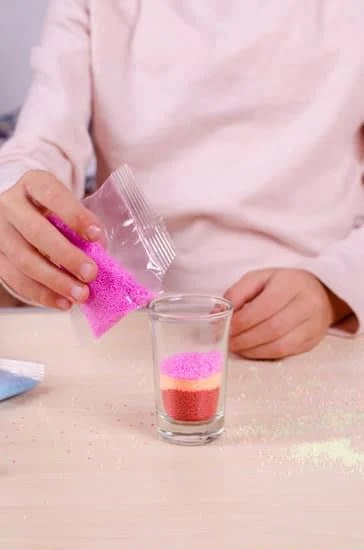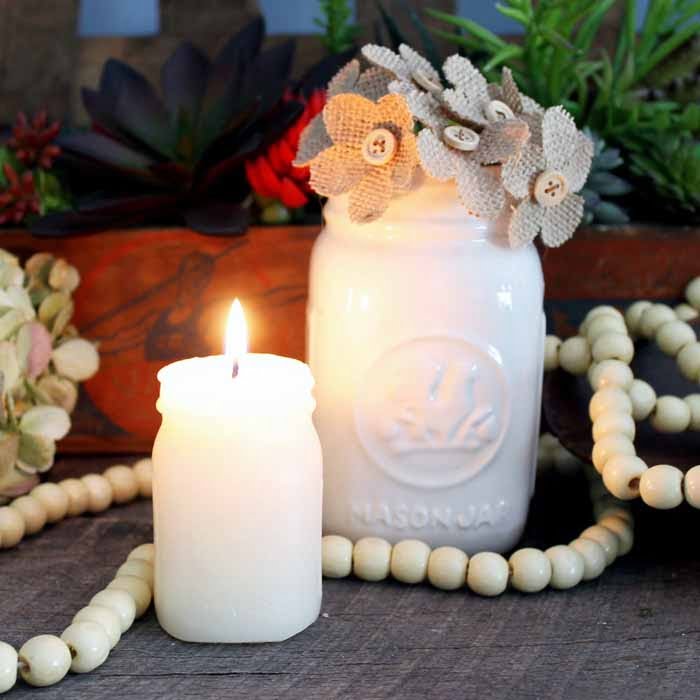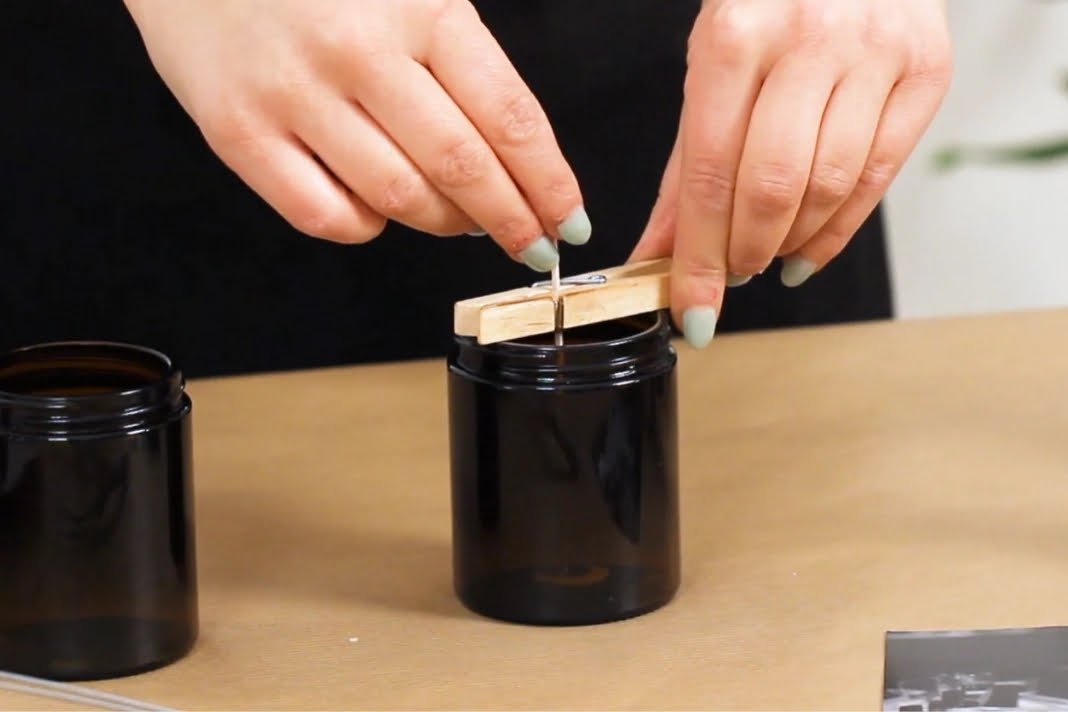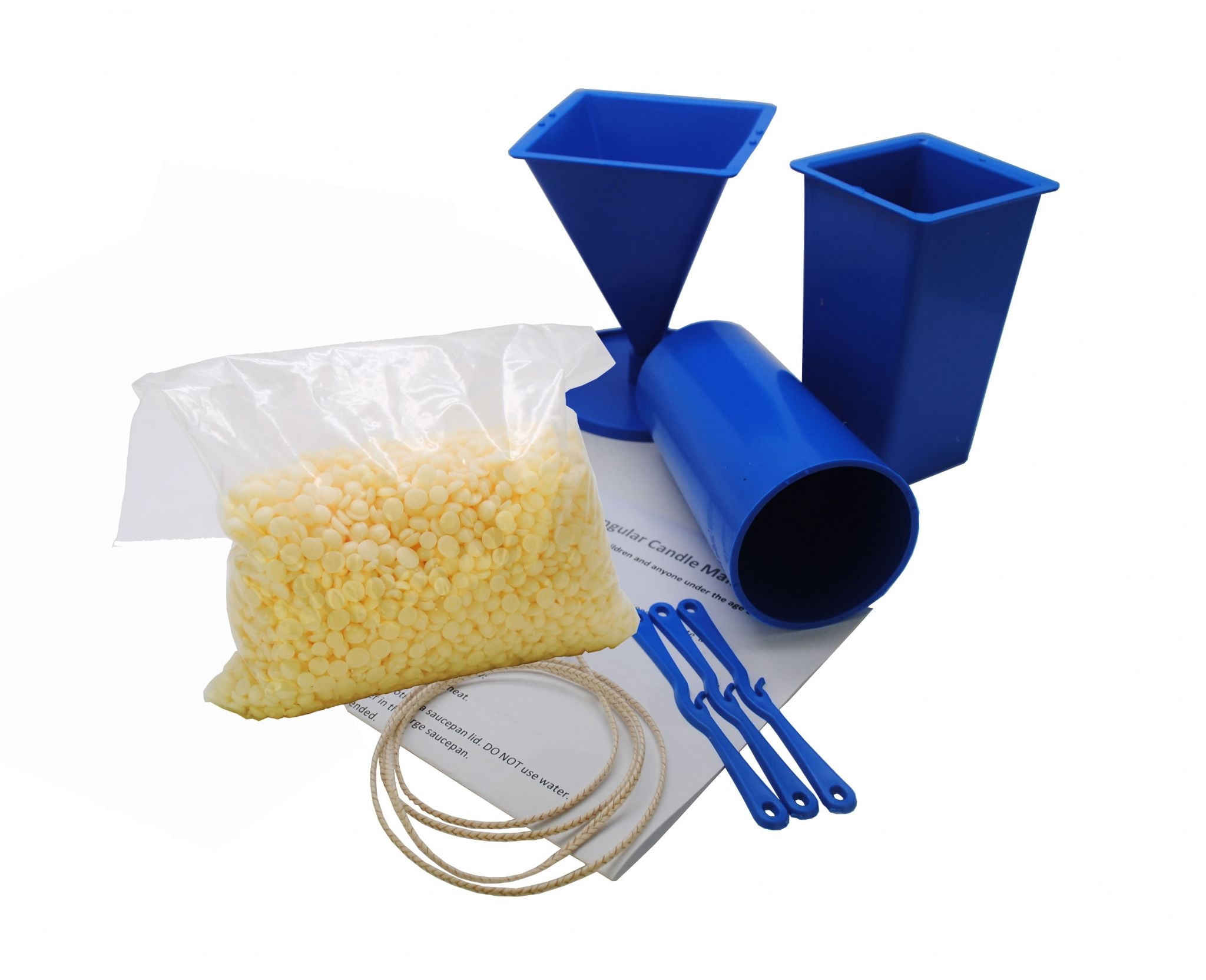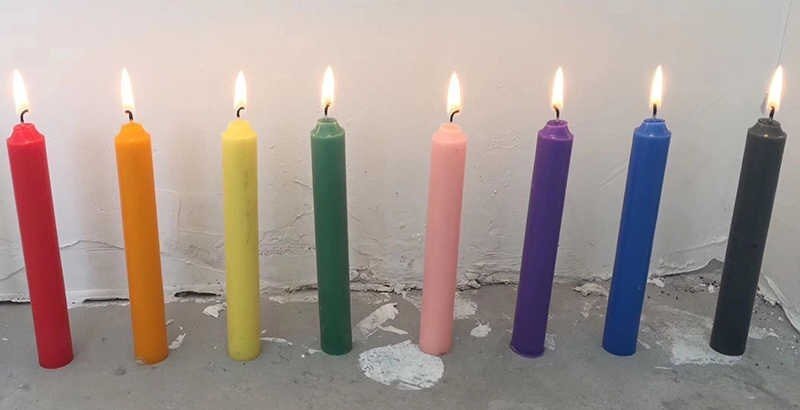Candle making temperature Celsius is a crucial factor that can greatly influence the quality and appearance of the final product. The temperature at which you heat your wax, add fragrance, and pour your candles plays a significant role in achieving the desired results. Understanding how different temperatures affect the candle making process is essential for any aspiring chandler.
Temperature precision is key when it comes to candle making. Even a small variation in Celsius degrees can lead to differences in texture, scent throw, and burn time. In this article, we will delve into the importance of temperature in candle making, explore the ideal Celsius temperature for each stage of the process, and provide tips for maintaining the right temperature throughout.
We will also discuss how different temperatures can impact the quality and appearance of your candles. Factors such as ambient room temperature, type of wax used, and even humidity levels can all play a role in determining the ideal working temperature for your candle making endeavors. By understanding these factors, you can achieve better control over the final outcome of your candles.
Understanding the Ideal Celsius Temperature for Candle Making
When it comes to candle making, temperature plays a crucial role in the quality and appearance of the final product. Understanding the ideal Celsius temperature for candle making is essential for achieving the best results. Different types of candles require different temperatures during the melting, pouring, and cooling stages of the process.
To ensure that you are using the right temperature for your candle making project, it’s important to consider the following factors:
- The type of wax being used: Different waxes have different melting points, so it’s important to adjust the temperature accordingly. For example, soy wax has a lower melting point compared to beeswax or paraffin wax.
- The type of additives: If you are adding colorants or fragrances to your candles, you will need to factor in their specific temperature requirements as well.
- The desired outcome: Depending on the style and design of your candles, you may need to manipulate the temperature to achieve certain effects, such as marbling or layering.
Factors such as pouring too hot or too cold can result in uneven textures, sinkholes, or poor scent throw. By understanding and controlling the ideal Celsius temperature for candle making, you can ensure that your candles turn out just the way you want them.
Experimenting with different temperatures can also lead to exciting new discoveries in candle making. It allows you to explore various effects and techniques that can elevate your craft. However, it’s important to keep detailed notes about your experiments so that you can replicate successful results in future projects.
Factors to Consider When Choosing Candle Making Temperature in Celsius
When it comes to candle making, temperature plays a crucial role in the process. The right temperature can affect the quality, appearance, and overall outcome of your candles. Choosing the ideal Celsius temperature for candle making is essential for achieving the best results. There are several factors to consider when determining the appropriate temperature for your candle making process.
Wax Type
The type of wax you are using will have a significant impact on the ideal temperature for candle making. Different waxes have different melting points and characteristics. For example, soy wax typically melts at a lower temperature compared to paraffin wax. It’s important to research and understand the specific melting point and heat requirements of the wax you are working with in order to achieve optimal results.
Additives and Fragrances
If you’re incorporating additives or fragrances into your candles, it’s important to consider their heat tolerance. Some fragrances and additives can be sensitive to high temperatures and may lose their effectiveness if exposed to excessive heat during the melting and pouring process. Be sure to check the recommended handling temperatures for any additional ingredients you plan to use in your candles.
Molds and Containers
The type of molds or containers you use for your candles can also impact the ideal temperature for candle making. Different materials have varying heat resistance capabilities, so it’s essential to choose appropriate molds or containers that can withstand the heat required for melting and pouring your wax.
Considering these factors when choosing candle making temperature in Celsius will help you achieve consistent results and high-quality candles every time. Paying attention to these details will ensure that your candles turn out just as you envisioned them, both in appearance and performance.
How Different Temperatures Affect the Quality and Appearance of Candles
When it comes to candle making, temperature plays a crucial role in determining the quality and appearance of the final product. The right temperature can help to ensure that your candles turn out beautiful and long-lasting, while the wrong temperature can lead to imperfections and defects. Understanding how different temperatures affect the quality and appearance of candles is essential for any candle maker.
Here are some ways in which different temperatures can impact the quality and appearance of candles:
1. Scent Distribution: When making scented candles, the temperature at which you add the fragrance oil can affect how well the scent is distributed throughout the candle. If the wax is too hot, some of the fragrance oils may evaporate, leading to a weaker scent throw. On the other hand, if the wax is too cool, the fragrance oils may not disperse evenly, leading to uneven scent distribution.
2. Smoothness and Finish: The temperature at which you pour your wax into molds or containers can also affect the smoothness and finish of your candles. Pouring wax at too high of a temperature can result in a rough, uneven surface, while pouring at too low of a temperature can cause frosting or sinkholes.
3. Color Vibrancy: When adding colorants to your candles, the temperature at which you mix them with the wax can impact how vibrant and even-colored your candles will be. The ideal temperature for incorporating colorants into wax will depend on the type of dye or pigment being used.
Understanding these effects can help you make informed decisions about candle making temperature in Celsius to achieve consistent results and produce high-quality candles every time. By carefully controlling the temperature throughout each step of the process, you can ensure that your candles turn out exactly as intended.
Tips and Tricks for Maintaining the Right Temperature Throughout the Candle Making Process
Maintaining the right temperature throughout the candle making process is crucial for achieving high-quality, visually appealing candles. Here are some valuable tips and tricks to help you ensure that the temperature remains at an ideal level for successful candle making.
Use a Reliable Thermometer
Invest in a good quality thermometer that can accurately measure the temperature of your wax. This will help you monitor the temperature throughout the entire candle making process, from melting the wax to pouring it into molds. Keep in mind that different types of wax have different melting points, so be sure to adjust your temperature settings accordingly.
Utilize a Double Boiler Method
To maintain a consistent temperature while melting your wax, consider using a double boiler method. This involves placing your wax in a heat-resistant container and then immersing that container in a pot of water on the stove. The water acts as a buffer between the direct heat source and the wax, preventing it from getting too hot too quickly.
Avoid Rapid Temperature Changes
Sudden fluctuations in temperature can negatively impact the quality and appearance of your candles. To prevent this, try to keep your work area at a stable room temperature and avoid placing hot containers of melted wax directly onto cold surfaces. Additionally, if you need to cool your candles down quickly after pouring them, consider using a controlled cooling method such as a cold water bath instead of exposing them to rapid air cooling.
By incorporating these tips and tricks into your candle making process, you can effectively maintain the right temperature throughout each stage of production, ultimately leading to more consistent and visually appealing results.
Common Mistakes to Avoid When Dealing With Candle Making Temperature in Celsius
When it comes to candle making, one of the most common mistakes to avoid is not paying attention to the temperature. Many beginners overlook the importance of maintaining the right temperature throughout the candle making process, which can ultimately affect the quality and appearance of the final product. One of the key mistakes to avoid is exposing the wax to high temperatures.
This can result in discoloration, uneven melting, and even potential fire hazards. It is crucial to use a thermometer to monitor and control the temperature during each stage of the candle making process.
Another mistake to avoid is not allowing enough time for the wax to cool and set properly. Rushing this step can lead to imperfections such as sinkholes or air pockets in the candles. It’s essential to follow recommended cooling times based on the type of wax being used and the size of the candles being made.
Additionally, failing to account for external factors such as humidity can also lead to issues with cooling and setting. Maintaining a consistent environment within a recommended temperature range is key for successful candle making.
Furthermore, neglecting to consider how different fragrances and additives respond to varying temperatures can also result in undesirable outcomes. Certain fragrances may evaporate at high temperatures, while others may solidify too quickly at lower temperatures, affecting their scent throw and overall performance in the candles. It’s important for candle makers to research and understand how different materials used in their recipes react under specific temperature conditions in order to achieve optimal results.
| Common Mistakes | Effects |
|---|---|
| Exposing wax to high temperatures | Discoloration, uneven melting, potential fire hazards |
| Rushing cooling and setting process | Imperfections such as sinkholes or air pockets |
| Neglecting consideration for fragrances and additives | Evolving scents, suboptimal performance in candles |
Experimenting With Temperature
When it comes to candle making, temperature plays a crucial role in determining the quality and appearance of the final product. The temperature at which you melt and pour your candle wax can have a significant impact on the outcome, including the texture, fragrance throw, and burn time of the candle. By experimenting with different temperatures, candle makers can explore a range of effects and customize their candles to meet their specific preferences.
One key area of experimentation is in the melting point of the wax. Different types of wax have varying melting points, and altering the temperature at which you melt the wax can produce different results.
For example, a lower melting point may result in a smoother and more uniform appearance, while a higher melting point could create a textured or mottled finish. By adjusting the melting temperature within a few degrees Celsius, you can observe how it affects the overall look and feel of your candles.
In addition to experimenting with melting temperatures, candle makers can also explore the impact of pour temperatures on their candles. Pouring wax at higher or lower temperatures can lead to variations in surface texture, adhesion to containers, and curing time. By testing different pour temperatures within a controlled range, you can gain insight into how these factors influence the finished product.
| Temperature (Celsius) | Effects |
|---|---|
| 50-55 | Smooth texture and even finish |
| 60-65 | Mottled or textured appearance |
| 70-75 | Rough or uneven surface |
Conclusion
In conclusion, the temperature plays a vital role in the art of candle making. Understanding the ideal Celsius temperature for candle making is essential for achieving high-quality and visually appealing candles. Factors such as wax type, fragrance oils, and dyes must be considered when choosing the right temperature to ensure the best results.
It is crucial to recognize how different temperatures can affect the quality and appearance of candles. For instance, higher temperatures may result in a smoother finish while lower temperatures can create a rustic texture. By experimenting with temperature, candle makers can explore various effects on their creations and develop their own unique styles and techniques.
Maintaining the right temperature throughout the candle making process is key to producing consistent and professional-looking candles. This requires careful monitoring of temperatures at every stage, from melting the wax to pouring and setting. Additionally, it is important to avoid common mistakes such as overheating or rapid cooling, which can lead to imperfections in the final product.
By mastering the art of candle making temperature in Celsius, artisans can elevate their craft and produce candles that stand out among others. With attention to detail and an understanding of how temperature impacts the outcome, candle makers can create stunning candles that are both functional and visually appealing. Therefore, with patience, practice, and experimentation, one can truly become an expert in utilizing candle making temperature in Celsius to achieve outstanding results.
Frequently Asked Questions
What Is the Best Temperature for Candle Making?
The best temperature for candle making typically ranges between 120-180 degrees Fahrenheit (49-82 degrees Celsius). This temperature range allows for the wax to melt evenly and ensures a good bond with the fragrance oils.
What Temperature Do You Mix Candles At?
When mixing candles, it is best to do so at a temperature between 160-180 degrees Fahrenheit (71-82 degrees Celsius). This higher temperature ensures that the fragrance oils are mixed thoroughly and evenly into the melted wax.
How Hot Is Candle Wax When Melted Celsius?
Candle wax is usually melted at a temperature around 160-180 degrees Fahrenheit, which is approximately 71-82 degrees Celsius. This temperature range allows the wax to become fully liquid and ready for mixing with fragrance oils and dyes.

Welcome to my candle making blog! In this blog, I will be sharing my tips and tricks for making candles. I will also be sharing some of my favorite recipes.

